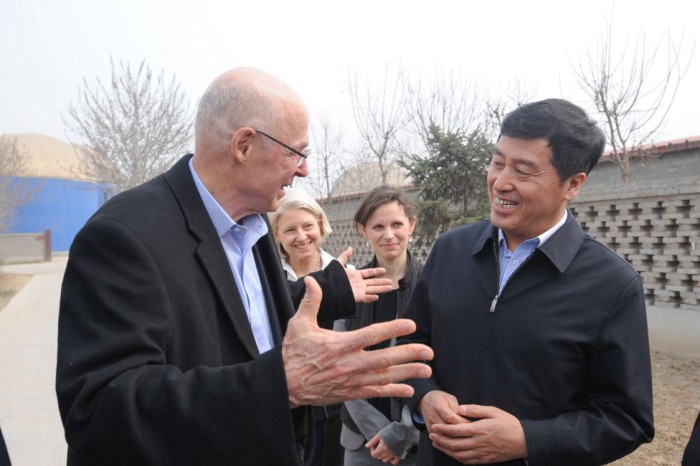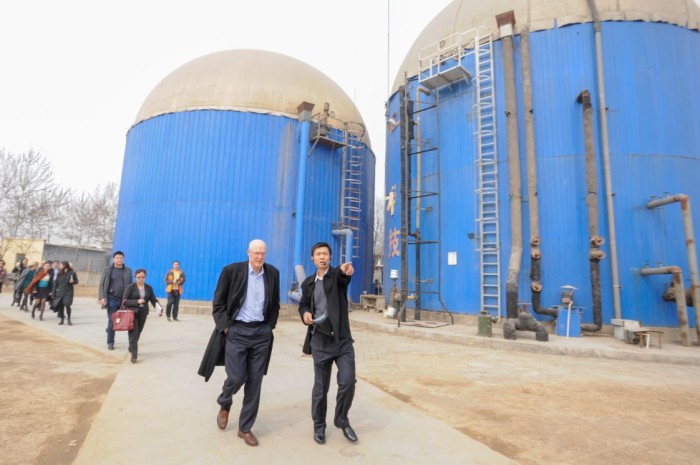
By Elle Carberry
The Paulson Institute recently visited Hebei Province to learn first-hand about the region’s challenges and possible solutions to China’s severe pollution problems. The Institute’s Climate Change and Air Pollution Program is researching policies that will help the “Jing-Jin-Ji” region surrounding Beijing meet its goal of reducing pollution 25 percent by 2017 while supporting economic growth.
Hebei is at the epicenter of China’s war on pollution: together with Beijing and Tianjin, the area is the focus of President Xi Jinping’s regional approach to tackling the problem. Seven out of China’s 10 smoggiest cities are located there, and provincial leaders are striving to cut polluting emissions while searching for ways to promote economic development.
“We are prepared to make big efforts in climate change and air quality with particular focus on the JJJ region,” Paulson said during his recent visit. “We are doing research in this area and are bringing in global experts. I wanted to be here myself to hear how we can support.”
While in Hebei, the Paulson delegation met with environmental and government officials, who reported some progress in tackling air pollution but stressed that there is much more work to be done.
“I see a lot of leadership here in Hebei,” Paulson said. “We want to support the JJJ region to solve these problems in the most economical way.”
The Hebei officials explained that they don’t yet have answers to a number of tough questions. Which factories, if any, should they close to help reduce pollution, and how can they protect workers who will lose jobs in the process? How can they do all this and still continue to support local GDP? Beyond that, how much can shutting factories alone improve air quality? How to coordinate a comprehensive solution, involving agriculture, industry and vehicles on the road?
To explore these issues, the Institute visited a public-private initiative led by IBM and Encanwell, a private Chinese company. The project utilizes a cloud computing system that combines real-time air quality data with local weather patterns and industry data to predict PM2.5 distribution in advance and offer short-term solutions. The analytics can tell the government which factories it should shut (or reduce output from) at any particular moment in order to keep ambient air quality levels down at healthier levels.
The government deployed the system during the November APEC meetings (when skies were miraculously blue after Hebei shut down may of its heaviest polluters), Chinese New Year and the recent National People’s Congress meetings.

The Paulson team also visited an innovative pig farm to learn more about the complex chemistry of air pollution. Pig waste produces ammonia, which reacts with SOX and NOX from heavy industry and power from coal to create a portion of the PM2.5 that contributes to the JJJ region’s pollution. By converting pig waste to biogas that produces electricity, the farm saves $75,000 a year, reduces ammonia emissions and substitutes for coal-fired power. The biogas waste also reduces the need for nitrogen fertilizers on nearby farms.
Paulson praised the farm’s entrepreneurial and innovative approach: “This just proves that market mechanisms—and private business—can help drive solutions to the complex challenges of air pollution from heavy industry to farms,” Paulson said.
“I grew up on a farm, and we had 400 pigs,” Paulson added. “I can still recognize the smells. Pigs smell the same, no matter big or small.”
Elle Carberry is managing director of the Paulson Institute’s Climate Change and Air Quality Program.


